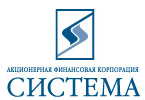|
|
|
 |
Virtual Tours round the Russian Museum The Mikhailovsky Palace |
     |
The Russian Museum
»
The Mikhailovsky Palace
»
Room 12
Room 12Towards the end of the eighteenth century, the ideology of the Enlightenment began to lay increasing stress on man’s proximity to nature. Large official portraits, with the subject surrounded by objects symbolising his or her private life and public work, were however still painted. A good example is the portrait of the vice-chancellor Prince Alexander Kurakin (1752–1818), painted in 1799 by Vladimir Borovikovsky (1757–1825). The columns and draperies, the sculptural portrait of the Emperor Paul and the subject’s right hand lying firmly on the official government papers speak of the position held by Alexander Kurakin in the state and society. But such portraits were becoming less and less common. The vast majority of portraits painted by Vladimir Borovikovsky — more than thirty of which are now in the collection of the Russian Museum — offer an excellent reflection of the aesthetical principles of Sentimentalism. The young Ekaterina Arsenieva (1776–?), painted by Borovikovsky in the latter half of the 1790s, is carefree, sensual and coquettish. Her white tunic-like dress and straw hat in the spirit of a shepherd’s reflect the fashion of those years for all things natural. At the turn of the eighteenth and nineteenth centuries, the family portrait began to enjoy increasing popularity. Quiet domestic joys and the heartfelt affections of spouses, parents and children were lauded as ideal relationships, regarded then as the greatest life force. |
The Project “The Russian Museum: the Virtual Branch” |